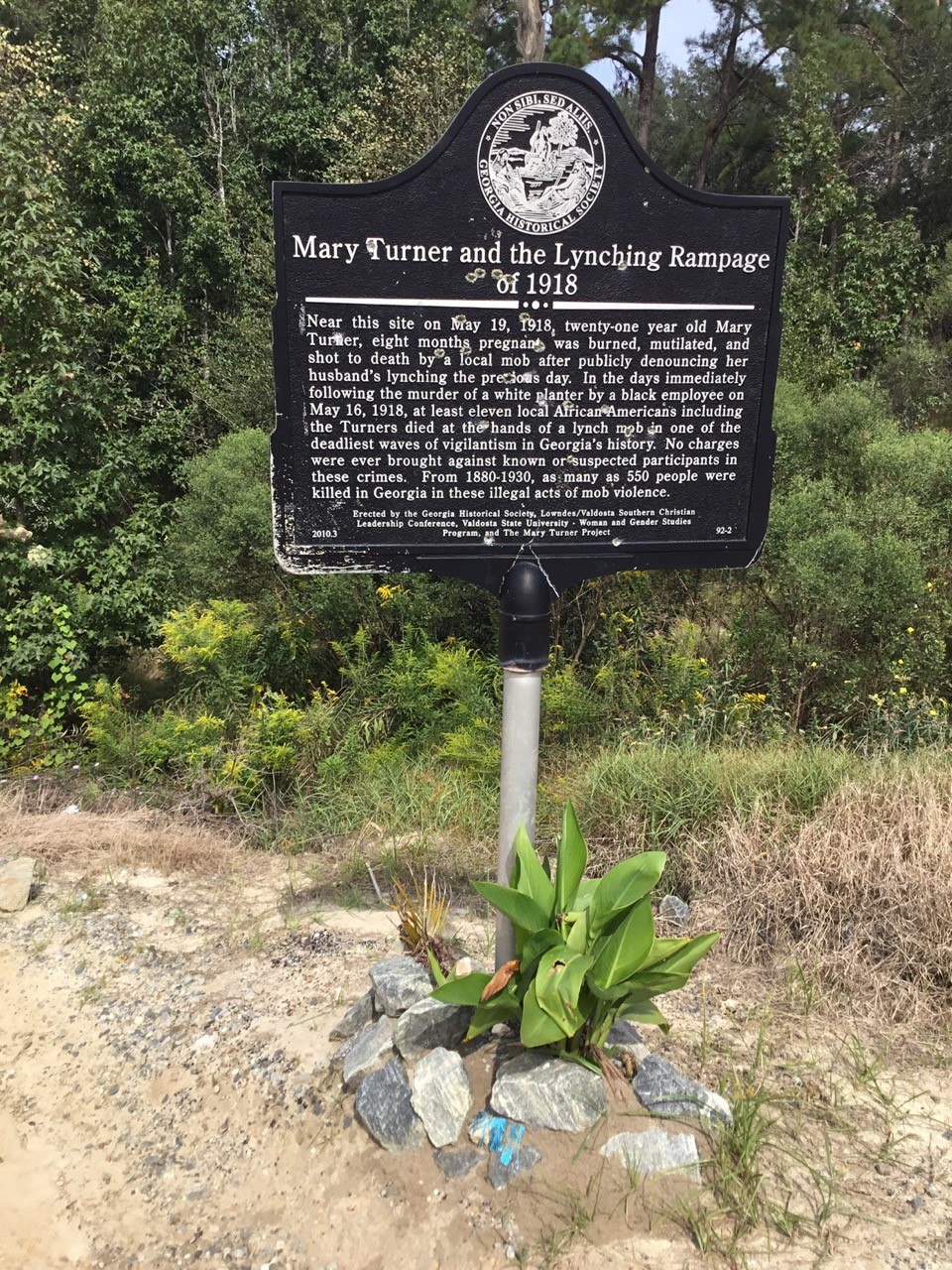
Caption
A bullet-ridden historical marker memorializing the lynching of Mary Turner and the lynching rampage of 1918 will be on display at the National Center for Civil and Human Rights.
Credit: The National Center for Civil and Human Rights



